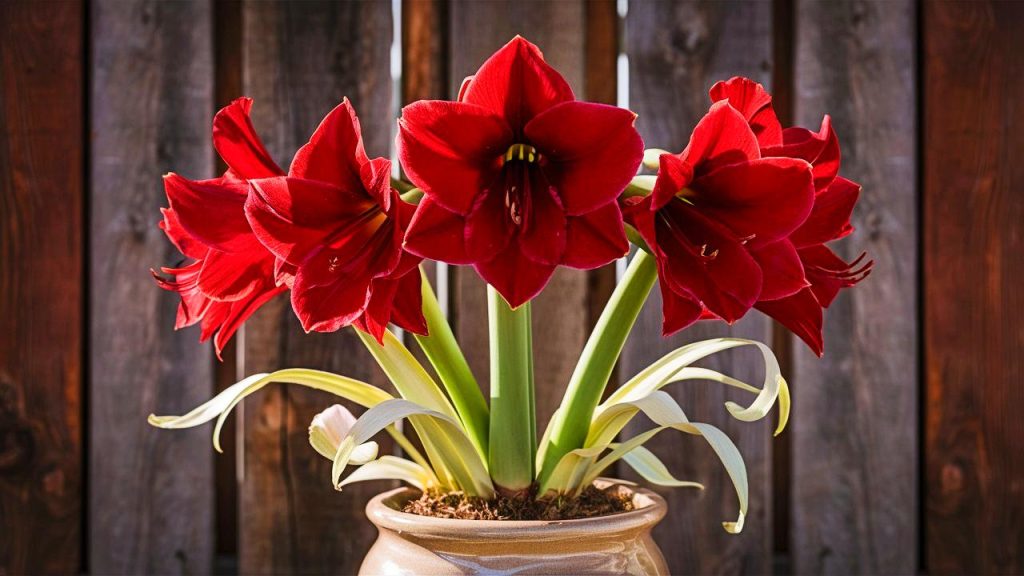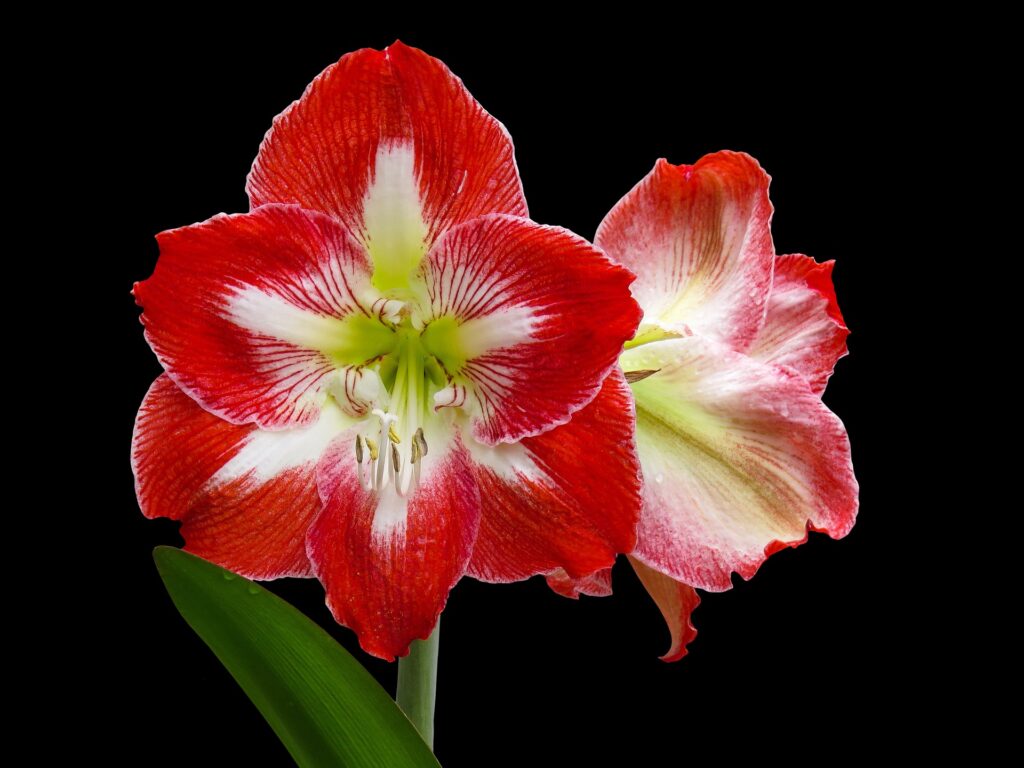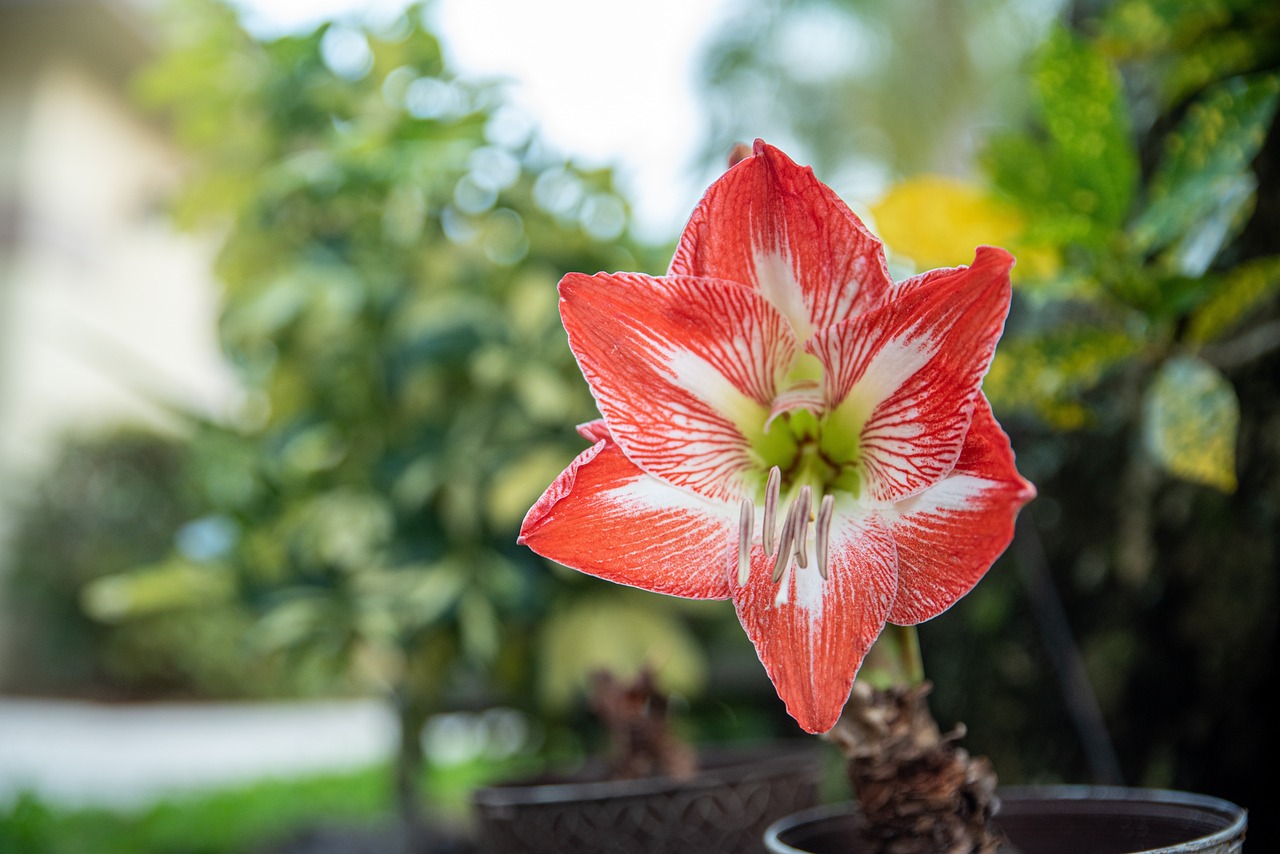As the winter months approach, many gardeners find themselves pondering what to do with their beloved amaryllis plants. Known for their stunning, large blooms that can brighten even the dreariest winter days, amaryllis (Hippeastrum spp.) has become a favorite among plant enthusiasts.
However, a common question arises: Can amaryllis stay outside in winter? In this blog post, we’ll explore the origins of amaryllis, its growing conditions, the winterization process, and ultimately answer whether these gorgeous flowers can thrive if left outdoors during the colder months.
Understanding Amaryllis: A Brief Overview
Origins and Characteristics
The amaryllis plant is native to Central and South America, where it thrives in warm, humid conditions. Known for its large, trumpet-shaped flowers that can come in various shades from red to white, amaryllis typically blooms in late winter or early spring. The bulb itself is particularly large and fleshy, storing nutrients to support the plant’s stunning floral display.
Growing Conditions
Amaryllis prefers well-draining soil, bright indirect sunlight, and moderate watering. These conditions make them popular as houseplants during the winter due to their ability to bloom indoors when most other plants are dormant. However, their tropical origins raise concerns about their ability to withstand colder temperatures.
Climate Considerations
Hardiness Zones

Before deciding whether to leave your amaryllis outside during the winter, it’s essential to understand your climate zone. The USDA Plant Hardiness Zone map divides North America into 13 zones based on average annual minimum temperatures. Amaryllis bulbs thrive in hardiness zones 9-11, where winter temperatures rarely fall below 20°F (-6°C). In these milder climates, amaryllis may survive outside, especially when provided with the necessary protective measures.
In colder regions (zones 7 and below), temperatures can drop significantly, and the risk of frost is much higher. In these areas, leaving amaryllis bulbs outdoors in winter is not advisable as they will most likely suffer from frost damage or rot.
Microclimates
Even within the same hardiness zone, local conditions can vary. Gardens with south-facing walls, sheltered nooks, or areas protected from harsh winds may provide a better environment for your amaryllis bulbs. Understanding your garden’s microclimate will help you determine the best approach to winter care.
Preparing Amaryllis for Winter
Indoor vs. Outdoor Care

If you live in a suitable climate zone, you might contemplate leaving your amaryllis outside; however, there are some precautions you should take. Here’s how to prepare your amaryllis for winter.
For Pot-Grown Amaryllis
Gradual Acclimatization: If your amaryllis has been indoors, gradually acclimate it to outdoor conditions over a week or so. This helps the plant adjust to the change in humidity and temperature.
Choose a Protected Location: Place your potted amaryllis in a location that avoids direct exposure to harsh winds and frost. A patio or under a porch roof can provide some shelter while still allowing them to remain outdoors.
Mulching: Add a layer of mulch on top of the soil in the pot to help retain moisture and regulate soil temperature. Organic materials like straw, wood chips, or fall leaves work well as mulch.
Watering: Keep the plants hydrated but not overly watered; too much moisture can lead to rot. It’s essential to monitor the pots and ensure that water can drain freely.
Bring Indoors in Severe Cold: If a significant cold snap is predicted (usually below 20°F or -6°C), it’s best to bring your potted amaryllis indoors to protect them from the cold.
For Garden-Planted Amaryllis
Preparation for Freezing Conditions: In regions where temperatures may drop below freezing, consider digging up the bulbs before the first frost. Dry them off in a cool, dark area for a few days before storing.
Storage: Store the bulbs in a paper bag or cardboard box with dry peat moss or sawdust to absorb moisture. Keep them in a cool, dry place with temperatures around 50°F (10°C).
Mulching and Protecting: If you live in a milder area within zones 9-11, mulch around the base of the amaryllis plants with straw or shredded leaves. This helps insulate the roots and protect them from temperature fluctuations.
Water Management: Water the bulbs lightly after the foliage dies back but avoid excessive watering. Amaryllis bulbs can suffer if left in waterlogged soil during winter.
Indoor Amaryllis Care During Winter

For those unable or unwilling to risk leaving their amaryllis outside, bringing them indoors is the prudent choice. Here’s how to care for your amaryllis during the winter months:
Location
Place your amaryllis in a bright, indirect light location. A sunny windowsill is often ideal, but be cautious of areas where harsh, direct sunlight might scorch the leaves. Amaryllis thrives in temperatures between 60°F and 75°F (15°C to 24°C). Avoid placing them near drafts, heating vents, or cold windows, as temperature fluctuations can stress the plants.
Watering
Indoor amaryllis needs careful watering. Allow the top inch of soil to dry out before watering again. Overwatering can lead to bulb rot, a common problem during winter when humidity levels can be lower. Use potting soil that drains well and ensure that pots have adequate drainage holes.
When amaryllis starts to grow foliage and ultimately blooms, you may need to increase watering slightly, but always check the soil moisture first. If you’re in a dry indoor environment, consider misting the plant occasionally to increase humidity without over-saturating the soil.
Fertilizing
Once your amaryllis begins to grow again after a period of dormancy (around late winter or early spring), it’s time to resume fertilizing. Use a balanced liquid fertilizer, diluted to half strength, every two weeks. This will provide the nutrients necessary for vibrant blooms. Stop fertilizing when the flowers begin to fade and the plant starts to go dormant again.
Dormancy
After blooming, typically in late spring or early summer, amaryllis should enter a period of dormancy. Gradually reduce watering and allow the leaves to die back naturally. This period of dormancy is crucial for the bulb’s health and helps prepare it for the next growing season. Store the bulb in a cool, dark place until you are ready to plant it again in the fall.
Potential Issues When Leaving Amaryllis Outside
Freezing Temperatures
The most significant risk of leaving amaryllis outdoors in colder zones is exposure to freezing temperatures. If temperatures drop below 20°F (-6°C), the bulb and roots are at risk of freezing, which can lead to permanent damage or death. Even in milder zones, unexpected cold snaps can catch gardeners off guard, leading to plant loss.
Pests and Diseases
Outdoor amaryllis are susceptible to a variety of pests such as aphids, spider mites, and thrips. These pests thrive during warmer months and can cause significant damage if not controlled. Keeping your plants healthy and monitoring them regularly can help mitigate infestations. Additionally, outdoor plants are also at risk of fungal diseases, particularly if the bulbs sit in waterlogged soil.
Rotting Due to Excess Water
While amaryllis prefers slightly moist conditions, prolonged exposure to excess water, especially in poor drainage situations, can lead to bulb rot. This can be particularly problematic in areas that experience heavy rainfalls or inconsistent drainage. Monitoring soil moisture and ensuring adequate drainage is vital.
Conclusion: The Verdict on Wintering Amaryllis Outside
To summarize, whether amaryllis can stay outside in winter depends largely on the climate and specific conditions of your gardening environment:
Hardiness Zone Considerations: If you live in USDA zones 9-11, you may have success keeping your amaryllis outdoors during winter. Providing mulch, shelter, and proper watering can enhance their chances of survival. Be ready to bring them indoors or provide extra protection if temperatures dip below 20°F (-6°C).
For Colder Zones: In colder climates (zones 7 and below), it’s best to dig up your amaryllis before frost hits. Store them in a cool, dry place to protect them from freezing temperatures and ensure they return to health and vitality in the next growing season.
Indoors as an Alternative: For gardeners who want a sure way to enjoy the amaryllis blooms, bringing them indoors is an excellent option. With the right care—bright light, controlled watering, and balanced fertilization—you can enjoy their stunning flowers waiting for the dreary winter months to pass.
Ultimately, whether your amaryllis is nestled outside in a cozy winter setting or brought indoors for safe keeping, the goal is the same—to provide the best care possible, allowing these remarkable plants to thrive and reward you with their beauty





